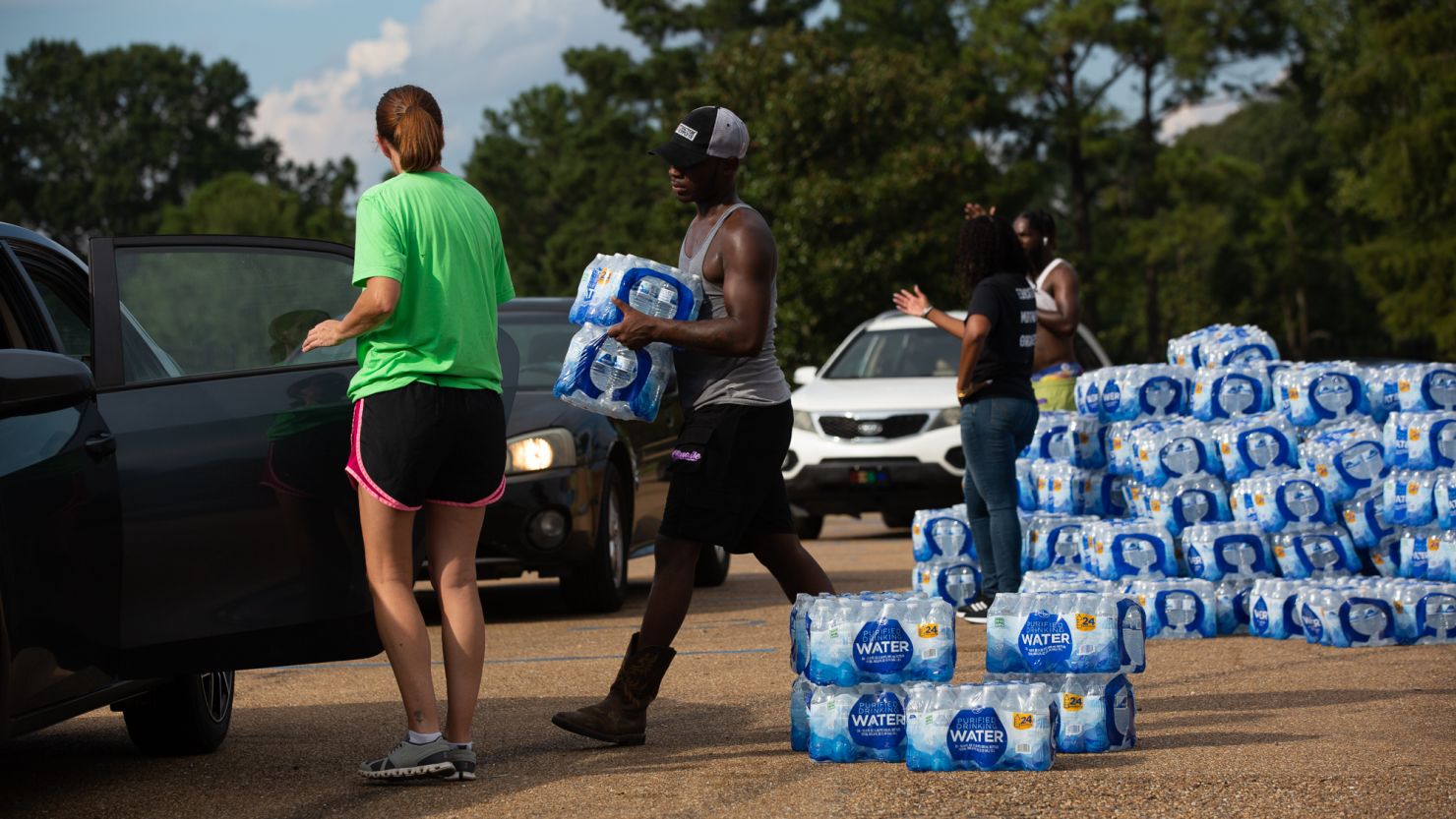What residents of Jackson, Mississippi long viewed as a looming crisis came to a head this week when torrential rains battered the city, causing the Pearl River to flood and its main water supply treatment facility to fail.
The city has since been without potable running water, and some have said that the water that is accessible from taps is brown and muddy, forcing people to use bottled water — if they can get their hands on it — to cook and brush their teeth. On Thursday, people of Jackson were advised to shower with their mouths closed.
But the water crisis did not come as a surprise to the city’s longtime residents. Jackson has seen a long string of challenges, including sharp economic declines, demographic changes and a shrinking population since the 1990s that have culminated in a city set up to fail its residents.
Mississippi state Rep. Ronnie Crudup Jr., a Jackson Resident, told CNN that by Tuesday, his family had running water, but it was discolored and unsafe to drink.
“This is something that has been occurring for years, but sometimes it takes these catastrophes to make sure that this disaster comes to light,” he said.
Here’s what you need to know about Mississippi’s capital city, and why this crisis has hit at a particularly devastating point in its history.
Unlike other Sunbelt cities, Jackson’s population has steeply declined
While other cities in the South have seen their populations swell over the past decade, Jackson is one of just a few major cities in the region that have experienced a sharp population decline, dipping more than 10% in the past decade. Jackson has just over 150,000 residents, down from nearly 200,000 in 1990.
A report published by the Mississippi Urban Research Center about Jackson’s failing water systems says that the city’s population decline has led to increased infrastructure issues and rising costs associated with them. The problem, the report states, was “associated with reduced quality of infrastructure that can further exacerbate population loss and, depending on the location, increase cost burdens on minority and low-income communities.”
The city has undergone drastic demographic changes
Jackson’s population decline has led to dramatic demographic changes, driven almost entirely by White flight. The city was 56% Black in 1990, but by 2020, more than 80% of the city’s residents were Black. In 1997, the city elected its first Black mayor, but by 2000, the city’s White population was rapidly dwindling, down by 16% from the decade before.
The shift in demographics has not translated to economic growth for the city’s Black population. The city’s two Black business districts, as well as the downtown district, both closed by the 2000s, and many of the city’s social services have dwindled.
According to the Mississippi Urban Institute’s report, Black residents have had to bear the brunt of the city’s water crisis.
“There is still the need to equalize the delivery of water services in the older, underserved areas of Jackson, which are predominantly occupied by Black and low-income residents,” the report says, adding that the aging water lines in these areas were the ones “most likely to fail, causing inordinately high maintenance cost.”
Household income has shrunk, while nearby suburbs have boomed
Jackson’s median household income has shrunk as its demographics have shifted. Mississippi is the poorest state in the nation, with 18.7% of residents living below the poverty line – but in Jackson, that figure is higher still at 24.5%.
Much of the city’s White flight has been to the nearby counties of Madison and Rankin, home to wealthy suburbs that surround Jackson. Madison County’s population has doubled since 1990, and according to a December 2021 CNN analysis was the only county in Jackson’s metropolitan area with a greater percentage of White people in 2019 than 1990.
Jackson’s population is aging, becoming more vulnerable to the effects of the city’s failures
Another effect of Jackson’s demographic changes is the size of its older population. As the overall population decreases in the city, and fewer new residents take root in the state’s capital city, the share of Jackson’s population that is made up of people over 60 years old has slowly crept upward. The effects of unclean, unusable drinking water could be especially pronounced for the city’s older residents, who may have compounding health issues, and may not be able to wait in long lines for bottled supplies or easily leave their homes.
While Jackson’s mayor Chokwe Antar Lumumba told CNN on Wednesday that he is hopeful water services can be restored this week, he has also stated that it will take up to $2 billion to repair the city’s aging water infrastructure, which has been slowly failing for years. While running water may be restored, Mississippi Governor Tate Reeves said at a press conference this week that there was no timetable for when they’ll be able to provide clean, drinkable water to the city’s taps, leaving residents in further limbo as the crisis continues.
“We are hopeful that we will be able to increase the quantity of the water which will ultimately get the tanks more full and ultimately lead to a scenario in which we can do the proper testing and actually produce clean water,” the governor said. “But we’re not there yet.”
CNN’s Nicquel Terry Ellis also contributed to this report.



